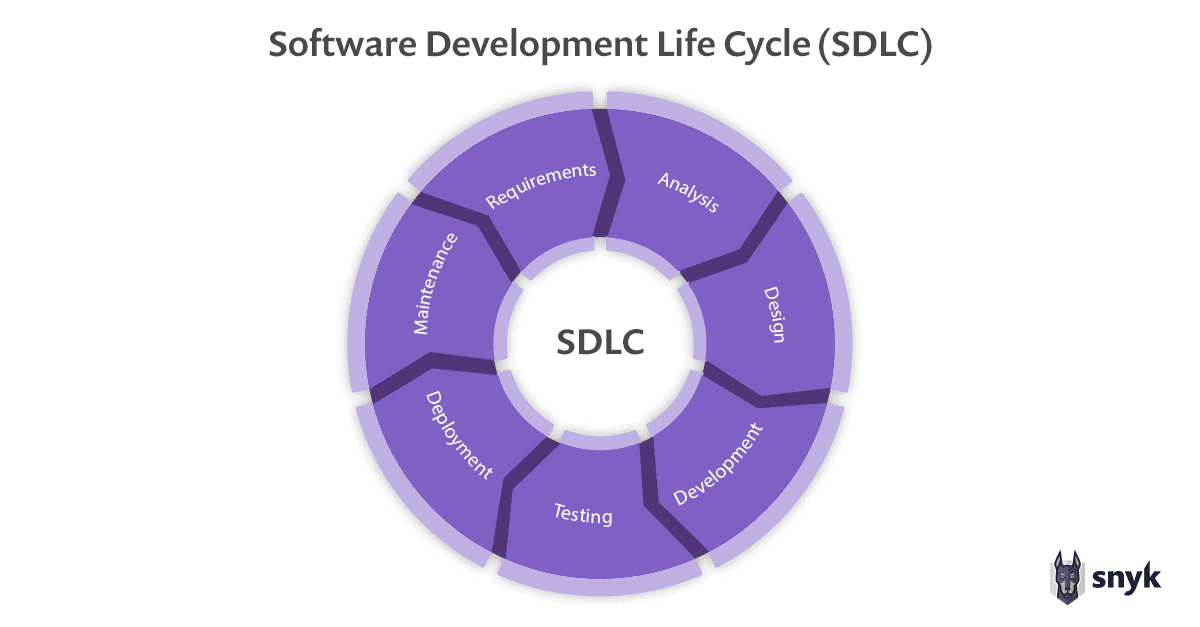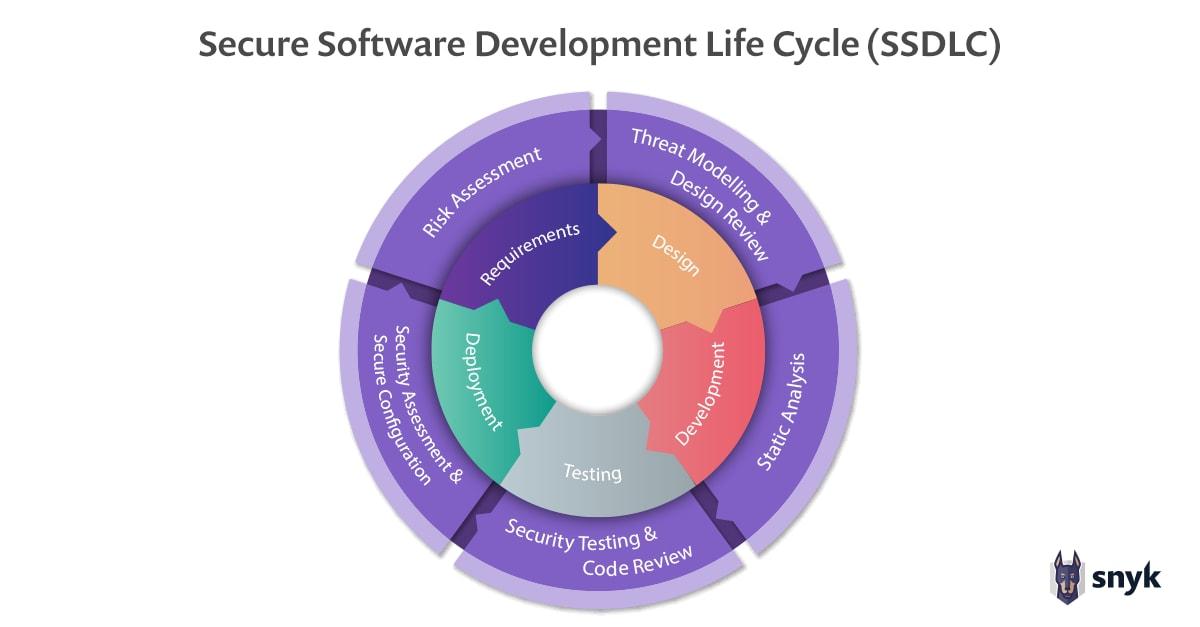Want to try it for yourself?
Software Development Life Cycle (SDLC): Phases and Methodologies
As software development tools continue to improve, this has opened new possibilities for building more advanced and sophisticated software, and at unprecedented speeds. Writing code is only one element of the software delivery process, but planning, management, and communication are equally important. This is where the software development life cycle (SDLC) plays an important role.
What Is the SDLC?
SDLC stands for software development life cycle and describes the process of shipping any kind of software deliverable, from small features to entire multi-million dollar systems. SDLC involves a number of phases, representing the sequence of steps required to go from concept to deliverable.
The manner in which these phases—discussed in detail below—are executed can vary significantly depending on the nature of the project and how it is managed.
Why Is the Software Development Life Cycle Important?
The software development life cycle provides a structured framework for approaching software projects, which often come with a high level of uncertainty. It allows project stakeholders to better understand what is required, to identify issues early on, keep costs down, and deliver higher quality software.
What are the 7 phases of SDLC?
While software development is often thought of as simply writing code, there are in fact a number of software development life cycle stages prior to delivery, of which programming is only one. These phases include requirements gathering, analysis, design, development, testing, deployment, and maintenance.

The SDLC phases are not necessarily a linear sequence, depending on the SDLC methodologies employed. The stages may in fact overlap or change order, as we will see below, where we discuss each of the individual phases.
1. Requirements Gathering
Before embarking on any software development project, it’s important to understand what actually needs to be done. It is not uncommon for development teams and their clients to have different ideas about what the final deliverable should look like. For example, the client might not know exactly what they need initially. Later in the project, however, once they are able to test the software, they may have a clearer idea.
The problem, however, is that at this stage, it is already too late. Development teams could end up investing lots of time and effort building a system with no validation, at which point it would take far more effort to change it so that it meets the client’s criteria and vision for the solution. It is therefore critical to work closely with the client from the earliest stages in order to understand their pain points and to elicit requirements effectively.
Beyond the initiation stage, the client should provide feedback throughout the software development life cycle process in order to make adjustments and ensure the client and development team are on the same page.
2. Analysis
After examining the problem that needs to be addressed in the requirements gathering stage, the development team is tasked with determining the best approach for achieving a solution. They must provide an estimate of the efforts involved in delivering such a project, including costs and a delivery timeline, but without going into too many technical details so early on in the project. The goal here is to assess the project’s feasibility based on factors such as budget and the expected delivery timeline.
3. Design
If the project passes the analysis phase, the development team can move forward with the plans for how the software will be built, the software development life cycle design phase. There are many different aspects to take into account when creating a software solution beyond the code itself, including infrastructure, system architecture, and the user interface. It is important to plan ahead and to ensure every functional and non-functional aspect alike is covered, since building all the necessary components without a plan in place could result in costly rewrites.
4. Development
Building the software itself is something of an art that goes beyond simply writing code. Code runs on an infrastructure that typically involves servers and networking or a managed hosting platform (such as Azure App Service or AWS Elastic Beanstalk).
DevOps is a best practice that bridges the traditional divide between developers and infrastructure engineers. Recognizing that infrastructure is just as important as code, DevOps engineers are usually part of the development team and can take care of anything from servers and networking to the CI/CD pipeline.
5. Testing
Developing software is not enough. Before the software is delivered to the client, the team must ensure it is fit for purpose and that there are no significant problems with it:
Does it satisfy all of the requirements?
Does it do so within a reasonable time?
Is it user friendly?
Can it scale to handle spikes in usage?
Have you implemented secure SDLC and application security testing to protect it from common exploits such as SQL injection attacks?
It is important to catch such problems early on, since fixing them becomes much more expensive later on in the SDLC.
6. Deployment
Once the software has been verified as fit for purpose, it’s time to hand it over to the client. Depending on how the project is managed, this could be done in a single step at the end of the project or as part of an ongoing process during the course of development. The software is then set up in a real environment, where the client conducts a round of user acceptance testing (UAT) before signing off and beginning to use the software in a production environment.
7. Maintenance
Although deployment is often viewed as the final step in shipping a piece of software, it is really just the beginning of the useful lifetime of that software. There is almost always a need to revisit it to fix bugs or add new features. The software supplier will usually provide the client with a service level agreement (SLA) that dictates how any issues with the software should be handled. If significant redevelopment is needed, this could require an entirely new SDLC.
SDLC Methodologies
Today, software projects are usually developed and delivered using agile methodologies. However, there are many other ways of implementing the SDLC in practice. The waterfall model is a more traditional approach but is seen as outdated by most. Other approaches such as the spiral model are no longer in widespread use.
Waterfall SDLC
The waterfall model is a rigid, linear approach where each phase of the SDLC feeds into the next one. For instance, all of the development phase must be complete before beginning the testing phase. This approach assumes that all information about a project can be known ahead of time, which is not realistic in a world where surprises crop up during development and requirements are constantly changing.
The waterfall approach does, however, have its place in mission-critical projects where there is no room for compromise on the requirements or the quality of the deliverable. History has shown several examples in the aircraft and space industries where software bugs have cost lives. In these scenarios, perfection is far more important than the flexibility to adapt and innovate.
Agile SDLC
Recognizing the dynamic nature of software, where requirements could change suddenly even in the middle of development, a group of prominent software engineers published the Agile Manifesto. The publication popularized the notion that software projects needed to respond to change quickly and could not be hindered by excessive bureaucracy.
This has led to an entire family of so-called agile methodologies, including Scrum, Kanban, Extreme Programming and others, all of which embrace the principles of the Agile Manifesto and implement the SDLC in slightly different ways.
Agile SDLC usually focus on rapid iteration, meaning deliverables are smaller and more frequent. This has a number of advantages including:
The cost of change is small: If requirements change, you might need to throw away a couple of days—not a whole year—of work.
SDLC phases can occur in parallel: A QA team can test a dev-complete feature while the development team is working on the next one.
More frequent deliverables: This allows the client to see how the software is taking shape early on in the process. This also enables rapid course-correcting and prevents surprises later in the process that could be very costly to fix.
The Secure Software Development Life Cycle (SSDLC)
Integrating security into every phase of the SDLC is essential.

Snyk, one of the best security tools available, can integrate at a variety of different points throughout the SDLC: from our CLI interface, through one-click Git integrations, and by adding Snyk as a failing stage in your CI/CD pipeline. There are different advantages to each starting point—better visibility of the team’s work for Git integrations, safer deployment with CI integration and so on.
When choosing which starting point best suits your needs, it is important to involve your dev teams so they know to expect this. We also suggest encouraging teams to use the Snyk CLI interface and IDE plugins that we offer. The further left you integrate Snyk in the development process, the easier it will be to fix issues that may arise.
The following tools can help to implement a secure software development life cycle:
Snyk Code: AI-powered static application security testing (SAST) to help identify and fix vulnerabilities in code.
Vulnerability Database: Identify potential exploits in third-party packages.
Snyk Infrastructure as Code (IaC): Find and fix security issues in Terraform and Kubernetes code.
Snyk Containers: Find vulnerabilities in your containers and Kubernetes applications.
Snyk Open Source Security Management: Find, prioritize, and fix vulnerabilities in your application’s open-source dependencies.
Live Hack: Exploiting AI-Generated Code
Gain insights into best practices for utilizing generative AI coding tools securely in our upcoming live hacking session.
The Benefits of SDLC
While in the past, it may have been possible for a single developer to deliver a project solo, today, even building relatively small applications can involve a range of tools, including programming languages, third-party libraries, cloud service providers, containers, as well as SQL and NoSQL databases. As such, almost every project now requires a team and involves many stakeholders—developers, testers, project managers, DevOps or DevSecOps engineers, and the client. SDLC provides a structured approach to keep everyone on the same page and working towards a common goal.
Develop fast and ensure your SDLC is secure with Snyk.




















